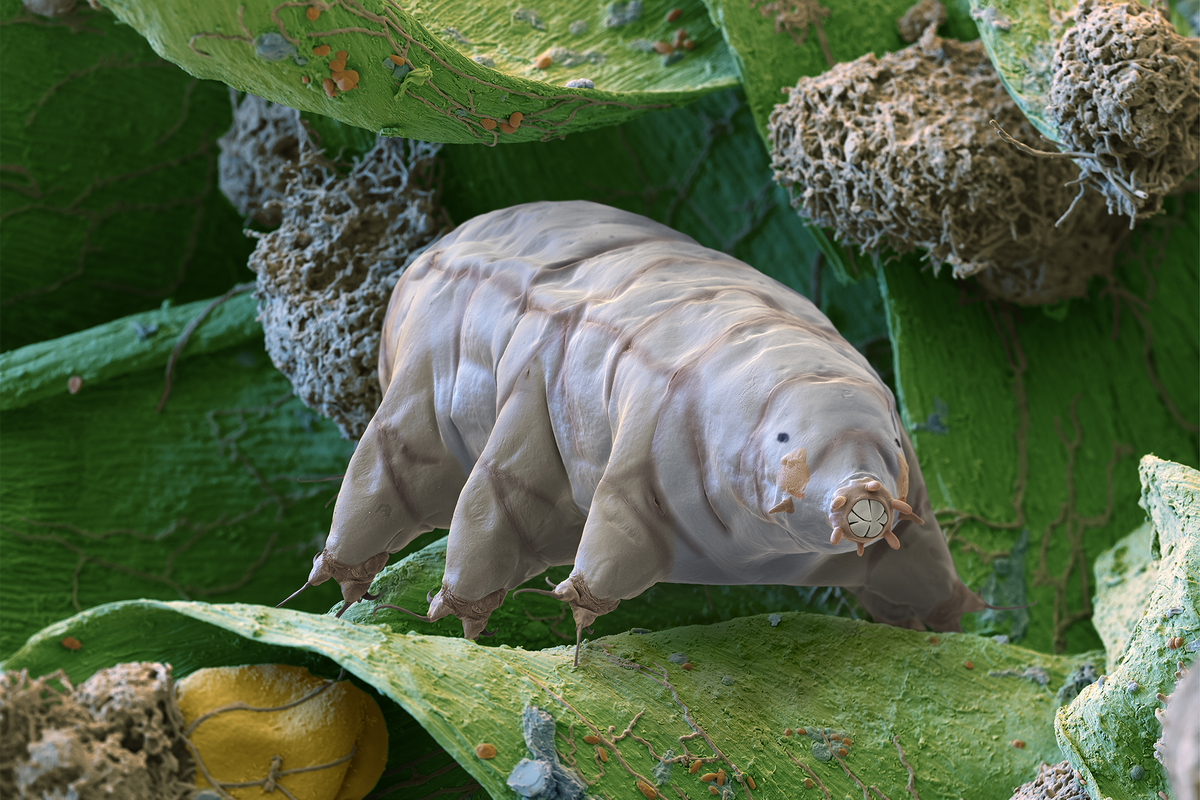Tardigrades are microscopic animals that can survive a host of conditions that are too extreme to ever occur on Earth—and scientists want to learn their secrets
Tiny tardigrades have three claims to fame: their charmingly pudgy appearance, delightful common names (water bear and moss piglet) and stunning resilience in the face of threats ranging from the vacuum of space to temperatures near absolute zero.
Now scientists have identified a key mechanism contributing to tardigrades’ resilience—a molecular switch of sorts that triggers a hardy dormant state of being. The researchers hope that the new work, published on January 17 in the journal PLOS ONE, will encourage further exploration of the microscopic creatures’ ability to withstand extreme conditions.
“It’s opened up a whole huge repertoire of experiments we can now pursue,” says Leslie Hicks, a chemist at the University of North Carolina at Chapel Hill and a co-author of the study.



So the importance here is it seems they’ve found a way to trigger the Tun state that make tardigrades tough (and which outside they very much are not) which would allow more consistent experiment design around tuns
To add, I think this bit is important as well. I’m just not smart enough to explain why.
Edit: I think it means that under stress the tardigrade forms the tun. But they also figured out that if cysteine is absent even under stress the tardigrade couldn’t form the tun.
Thanks for clarifying.